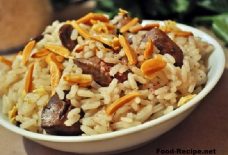Mediterranean Cooking from the Garden with Linda Dalal Sawaya: Waraq 'inab—how to pick and roll grape leaves
grapevines in my garden © linda dalal sawaya 2015
It’s Time to Pick and Roll Grape Leaves
Right now the grapevines in my garden are ready—not with fruit, but with fresh, young, tender leaves—to pick and use now or to freeze for later use for making stuffed grape leaves. Instead of using purchased grape leaves in a jar that tend to be tough for stuffing, nothing compares to unprocessed fresh-picked leaves for flavor and texture. Vegan or meat fillings suit any taste for this seasonal favorite Mediterranean finger food served as an appetizer or an entree.
When I was growing up in LA, my father planted several grapevines in our garden. Grape leaves were such a precious commodity that a grapevine was planted in our backyard especially for the leaves; they were more important than the grapes, as no fruits came from this grapevine, just the young, tender, shiny leaves picked in a tidy stack, tiny stems pointing to the sky.
My Oregon garden came with a typical delicious red concord grapevine, however, its leaves are grayish and fuzzy on the back—not the kind to use for dolmas or waraq ‘inab, as they’re called in Greek and Arabic. Dolmas means “stuffed” and can refer to any stuffed vegetable, while waraq ‘inab means “paper of the grape”. Other Arabic names are waraq arish, mahshi, yabra, and waraq dawali in Palestine. Over the years I have planted many other grape varieties, preferring the smooth leaves over those with fuzzy white backs. Right now, the time is perfect to pick these leaves and invite friends over to share the harvest.
grape leaves picked in my garden © linda dalal sawaya 2015
Rule of thumb when picking grape leaves is to find vines that are smooth; pick the youngest leaves that are about the size of your palm. Snip them from the vine with your thumbnail leaving ¼ to ½ inch stem and stack them all facing the same way until you have a 6″ stack or about 40 leaves. Blanch fresh or frozen leaves in warm water briefly to wilt them, or they will just wilt if left out at room temperature for a few hours. Because the season is limited, if you have suitable grape vines, be sure to pick extra leaves to freeze for winter suppers to bring a bit of summer back to the table. All that’s necessary is stacking dry leaves into freezer bags being sure not to crush them once they’re frozen.
blanched grape leaf ready to stuff © linda dalal sawaya 2015
To stuff, put a leaf face down on a clean, flat surface placing about a tablespoon of filling across the center as in the photo. Roll up from the bottom like a carpet, tuck the sides in and continue rolling to the tip of the leaf.
vegan/vegetarian filling for waraq ‘inab © linda dalal sawaya 2015
vegan filling on grape leaf © linda dalal sawaya 2015
rolling up waraq ‘inab © linda dalal sawaya 2015
first row of waraq ‘inab in pot with grape leaves lining bottom © linda dalal sawaya 2015
For either vegan or meat stuffings both mixed with rice, line a pot with torn or small grape leaves so the bottom layer of rolls does not stick to the pan. Making these roll-ups with friends and family makes the process swift and is the traditional way to share time and stories chatting until the filling is all used up. Stack each layer of grape leaves perpendicular to the previous layer. Recent inventions of grape leaf rolling machines are on the market, but their uniformity does not appeal to my aesthetic sensibility, even though it may speed up the process. Waraq ‘inab are truly a part of the slow food genre, worth every bit of effort when you taste the results.
cooked pot of waraq ‘inab with plate on top © linda dalal sawaya 2015
plate removed © linda dalal sawaya 2015
pot turned onto platter for serving © linda dalal sawaya 2015
vegan grape leaves © linda dalal sawaya 2015
Recipes for vegan or lamb Lebanese stuffed grape leaves are found in Alice’s Kitchen: Traditional Lebanese Cooking. Head out in the sunshine to the garden with your kids and friends and pick a stack of these nutrient-rich organic green leaves to fill and roll for a Mediterranean delicacy. Sahtein!
all photos and story © linda dalal sawaya
—Linda Dalal Sawaya is a Portland artist, cook, Master Gardener, daughter of Lebanese immigrants, and author of Alice’s Kitchen: Traditional Lebanese Cooking
Remember, as my mother Alice said, “If you make it with love, it will be delicious!”


